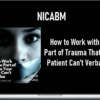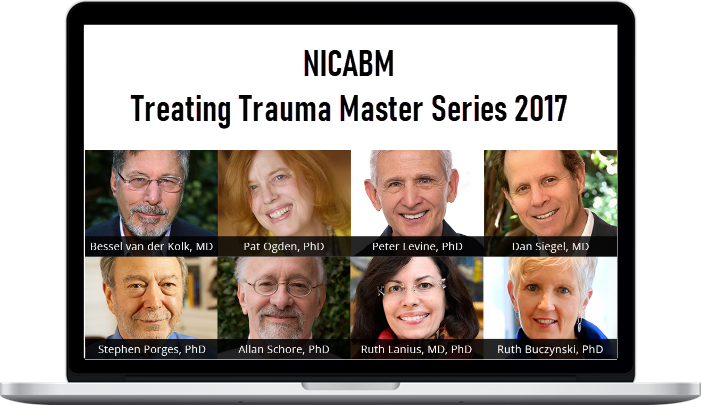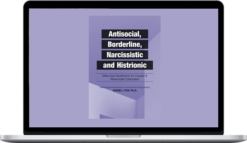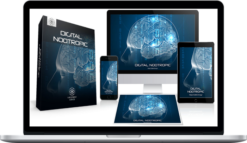NICABM – Treating Trauma Master Series 2017
$397.00 $22.00
Total Sold: 2
»Instant Delivery
Description
NICABM – Treating Trauma Master Series 2017
Description of Treating Trauma Master Series 2017
Trauma is complicated and nuanced . . .
. . . but promising clinical research and evidence-backed strategies can lead our practice in new directions.
What you’ll learn in Treating Trauma Master Series 2017
The Neurobiology of Trauma – What’s Going On In the Brain When Someone Experiences Trauma?

Bessel van der Kolk, MD Pat Ogden, PhD
Ruth Lanius, MD, PhD Dan Siegel, MD Stephen Porges, PhD
- How to Prevent Dissociation and Rewire a Client’s Reaction to Trauma
- The Hormonal Response to Trauma and How It Affects Brain Function
- The Part of the Brain That Activates the Freeze Response
- How to Help Clients Process Traumatic Memory That’s Stuck in the Body
- Epigenetics and Trauma: How Trauma Affects Gene Expression
- The Two Hormones That Disrupt Memory During Traumatic Events
- How Trauma Can Affect the Body’s Vulnerability to Inflammatory Disease
How to Work with Traumatic Memory That Is embedded in the Nervous System

Peter Levine, PhD Pat Ogden, PhD
Bessel van der Kolk, MD
- How the Nervous System Gets Tricked into Thinking Trauma Is Happening in the Present
- How to Help Clients “Unlearn” Their Nervous System’s Response to Trauma
- The Problem with Focusing on a Client’s Traumatic History
- What Can Go Wrong When We’re Helping a Client Come Out of a Dissociated State
- How Trauma Derails the Time-Keeping Part of the Brain (and One Way to Bring It Back)
- The One Key Factor That Can Make Traumatic Memory Overwhelming (and How to Work with It)
How to Help Clients Tolerate Dysregulation and Come Back From Hypoarousal

Stephen Porges, PhD Bessel van der Kolk, MD
Pat Ogden, PhD Ruth Lanius, MD, PhD
- The Critical Difference in the Brain Between Processing Trauma and Reliving Trauma
- How to Bring a Client Back from a State of Hypoarousal
- How to Help Clients Calm Their Bodies and Reengage the Thinking Brain
- How to Know Whether a Client’s Dysregulation Is a Symptom of Bipolar Disorder or Trauma
- How to Help Clients Tolerate Distress After Trauma
- What Happens in the Body During Hypoarousal
How to Work with the Limbic System to Reverse the Physiological Imprint of Trauma

Pat Ogden, PhD Peter Levine, PhD
Bessel van der Kolk, MD Ruth Lanius, MD, PhD
- How to Tell When Talk Therapy Could Be Keeping Your Client Stuck in Trauma
- How to Use Movement to Help A Client’s Body “Unlearn” Its Adaptations to Trauma
- Why Targeting the Limbic System Can Make Our Interventions More Effective
- What to Look for in a Traumatized Client’s “Movement Vocabulary”
- One Key Approach to Use with Clients Who Are Unable to Verbalize Their Trauma
- How to Use Limbic System Therapy to Reverse Feelings of Powerlessness After Trauma
- How Past Trauma Can Hurt a Client’s Ability to Protect Themselves from Future Trauma (and How to Break the Cycle)
The Neurobiology of Attachment

Dan Siegel, MD Pat Ogden, PhD
Ruth Lanius, MD, PhD Allan Schore, PhD Bessel van der Kolk, MD
- The Common Brain “Bias” That Could Lead to Misattunement with Your Client
- How to Help a Client Stay Emotionally Connected – Even When They’re Dysregulated
- One Powerful Workaround for Fostering Secure Attachment with a Client Who Has Never Felt Safe with Another Person
- How to Sidestep the “Safety Miscue” That Often Comes Up with Traumatized Clients
- What Part of the Brain Develops First (and Why That Is So Important When It Comes to Trauma)
- The Latest Developments in How a Mother’s Trauma Impacts the Developing Baby in Utero
- Why Connecting with the Right Brain is Key to Regulation
More courses from the same author: NICABM
Delivery Policy
When will I receive my course?
You will receive a link to download your course immediately or within 1 to 21 days. It depends on the product you buy, so please read the short description of the product carefully before making a purchase.
How is my course delivered?
We share courses through Google Drive, so once your order is complete, you'll receive an invitation to view the course in your email.
To avoid any delay in delivery, please provide a Google mail and enter your email address correctly in the Checkout Page.
In case you submit a wrong email address, please contact us to resend the course to the correct email.
How do I check status of my order?
Please log in to HealingCourse account then go to Order Page. You will find all your orders includes number, date, status and total price.
If the status is Processing: Your course is being uploaded. Please be patient and wait for us to complete your order. If your order has multiple courses and one of them has not been updated with the download link, the status of the order is also Processing.
If the status is Completed: Your course is ready for immediate download. Click "VIEW" to view details and download the course.
Where can I find my course?
Once your order is complete, a link to download the course will automatically be sent to your email.
You can also get the download link by logging into your HealingCourse account then going to Downloads Page.
Related products
Total sold: 3








